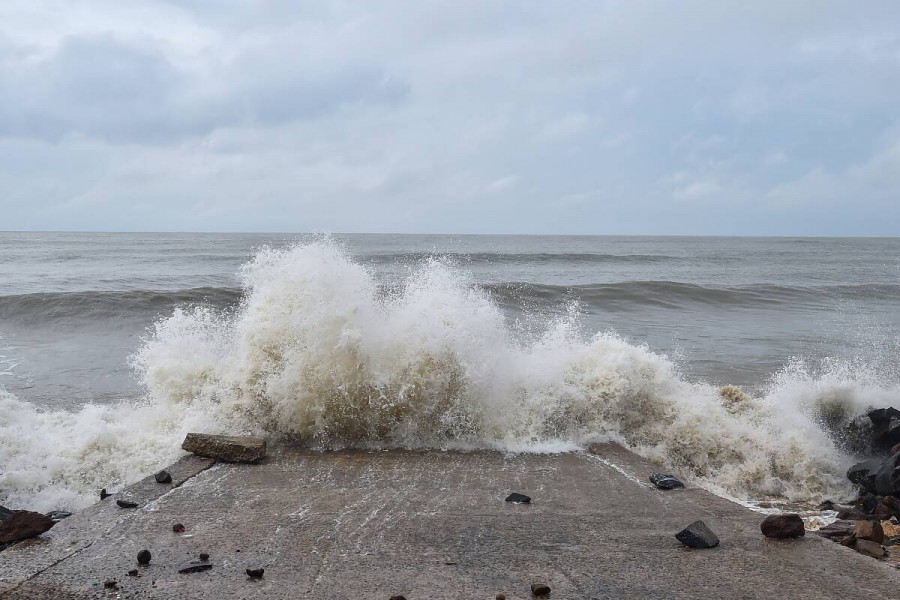Yet another tropical cyclone hit the country's coastal areas on May 26. Called Yaas, by the time it slammed on the Bangladesh shore, it had spent much of its destructive force. But the distressing impacts began to surface in a couple of days showing many functional dykes and embankments in disarray - leaving vast croplands and settlements submerged. The water level rose with the onrush of tidal surges. As seen in the recent years, cyclones nowadays continue to lose their earlier ferocity as theypummel past the Bangladesh coast towards that of India. Formation of depressions in the Bay of Bengal and their zigzag advance towards northeast or northwest has now become veritably an annual phenomenon. Except Sidr (2007), Aila (2009), Urir Char Cyclone (1985), Chittagong Cyclone(1991); and Gorky (1970) in the then East Pakistan, Bangladesh mostly remained spared of the devastations caused by killer cyclones.
The extent of immediate devastation has been lower in the recent cyclones than in the past ones. It also applies to the assault of Yaas on last May 26. A long stretch of time is said to be required to assess its impacts on the cyclone-hit villages. Though limited in quantity, relief goods have been rushed to the affected areas immediately. Distressingly, agricultural lands have emerged as the foremost of the swathes affected by the high-speed tidal surges. These surges containing saline water flooded the fields of the Aus crop and lands filled with vegetables. Salinity washes into sweet-water ponds, and also into the shallow tube-wells. Most alarmingly, farmers have started bracing for crop failures. It is taken for granted that the chief fallout of these tidal surge-centred cyclones is salinity intrusion. The salinity-filled water hardly recedes in a short time. An easy target of this water's onrush is the certain areas of the Sundarbans and its adjacent croplands. The natural water mixed with saline water during the Amphan cyclone two years ago is still found in the ponds of the forest.
After the recession of Yaas, the vast areas emerging as being badly affected by the cyclone included the Koyraupazila in Khulna, Kalapara in Patuakhali, and coastal villages in Pirojpur district where saline water submerged vast tracts of cropland. Road communications in these villages have been disrupted. In Mathbariaupazila of Pirojpurdistrict, large areas of Aus paddy seedbeds have been flooded with the water from tidal surges. Perhaps it was the improvised dykes built to check saline water onrush from the sea which bore the brunt of the cyclone. These dykes and overflowing river-water-resistant embankments are periodically built and repaired. But they develop breaches in no time. Making do with these half-damaged embankments continues for years on end, until the villagers get down to repairing the embankments with makeshift devices like earth- or cement-filled bags.
Due mainly to the Yaas impacts being limited to a few upazilas and nearly a hundred small and large villages, the cyclone's impact may not have received national importance. But they do deserve to be in wide focus. It cannot be rational to think that since they have been hitting Bangladesh nominally over the last one-and-half decades, they will not emerge in their full fury in the near future like in the past. But keeping this spectre in perspective, national disaster preparedness has to be on a state of alert to face any calamitous eventuality. The disaster preparedness of the country has elicited global acclaim after it coped with the Aila assault in 2009. This feat should not be frittered away.


